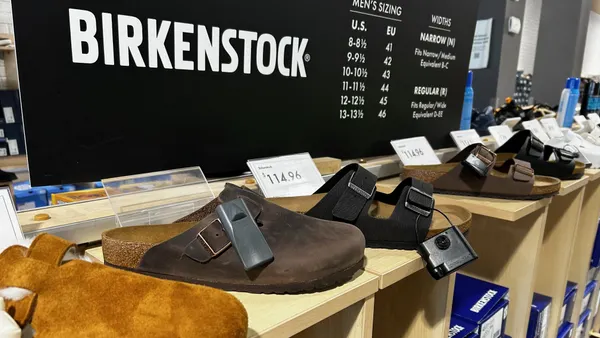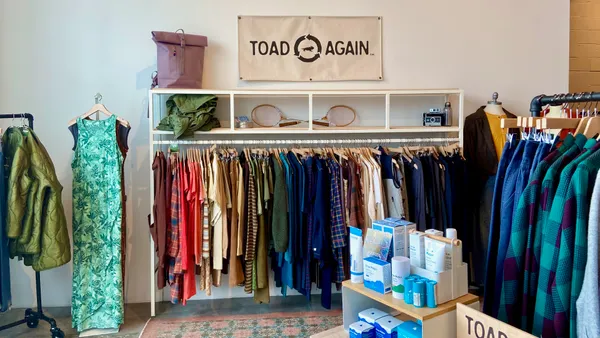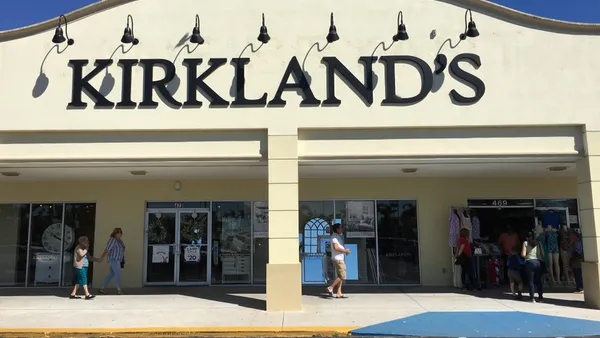Dive Brief:
-
Jeffries analysts have noted weak spending among Hispanic consumers in the United States this earnings season, likely due to uncertainty around the nation’s immigration policy, rather than economic worries, according to a note from the global investment banking firm emailed to Retail Dive.
-
America’s Hispanic population is most heavily concentrated in California, Texas and New Mexico, according to U.S. census information noted by Jeffries, and therefore is impacting retailers with stores in those areas, according to the report. Considering Hispanics make up about 18% of the U.S. population, a slowdown in spending by those consumers can have real impact, especially for companies with disproportionate exposure to the group, according to Jeffries analysts.
-
Still, because it’s a political and social problem rather than an economic one, there remains opportunity to market to Hispanic consumers, Jeffries analysts also said. “We assume weakness is a short term phenomenon, especially given the challenging environment for new legislation, so companies that have been hurt may be due for a rebound,” according to the report. “Also, some companies have already noted improvement.”
Dive Insight:
The Trumps have rattled retail since Donald Trump launched his presidential campaign with disparaging remarks about immigrants from Mexico. That led Macy’s to swiftly end sales of his Trump-branded merchandise, ending a decade-long partnership, and many other retailers have since followed suit over daughter Ivanka Trump's brand or tried to finesse the issue.
According to the recent report, the Trump administration’s uncertain immigration policies are taking a toll on the retail industry. O’Reilly Automotive CEO Gregory Henslee told investors earlier this year that “it's a conversation in our business.”
“There's areas where there were Hispanic shops in neighborhoods that are most prevalent,” he said, according to the Jeffries note. “Many of the shops are just closed. People have – they're just – I am assuming that they were not registered in the U.S., weren't legal in the U.S., and they're worried about being caught and deported. It's had an effect in markets that are heavy Hispanic. And it's not just something that we've seen. It’s something that most retailers have seen, I don't know who else is talking about, the only two I've heard talking about it are Target and Walmart and those in our business.”
Target has made a concerted effort to reach Hispanic consumers in all markets, increasing its Spanish language advertising at the holidays last year, among other initiatives. In fact, the big-box retailer was the 28th largest spender on Hispanic media in 2013, and has focused marketing to reach Hispanic shoppers through its campaign dubbed #SinTraducción (“without translation”) that included a comprehensive integration and product placements into the hit CW sitcom “Jane the Virgin,” which features mainly Latino characters.
Thanks to income and population growth, Hispanics of all ages in the U.S. will drive consumer spending beyond millennials’ influence by 2020, according to recent research from Morgan Stanley analysts. Retail spending by Hispanic-Americans will rise by 1.6 percentage points by 2020, more than millennial spending growth of 0.6 percentage points and spending growth by 65-years-old-plus whites of 0.4 percentage points, according to Morgan Stanley. With a median age of 29, there are plenty of Hispanic millennials, for that matter: Some 60% are millennial-age or younger, according to Pew Research Center data. CVS Pharmacy has similarly expanded its Hispanic-focused “CVS y más” initiative, first launched in Miami last year, to nine Los Angeles-area stores this year.
Target CEO Brian Cornell earlier this year lamented the fears on the part of the retailer's Hispanic customers, saying it's “concerning to me and should be concerning to a lot of us.”
"There's almost a cocooning factor," he said at the Fortune Brainstorm Tech event in July in Aspen, CO, according to a report from CNBC. "They are staying at home. They are going out less often. Particularly around border towns in the United States, you're seeing a change in behavior."
Other retailers that are or could be suffering from the issue include Ulta Beauty, e.l.f., and Ross Stores, according to Jeffries report. " There are 18 [metropolitan statistical area] which are 50% or more Hispanic and a number of the companies in the Jefferies universe over-index to these MSAs," according to the report. "Companies with big TX and CA exposure tend to be at the top of the list, but just because a company has high geographic exposure to these areas doesn't mean they necessarily serve a Hispanic clientele, and the reverse is also true."














